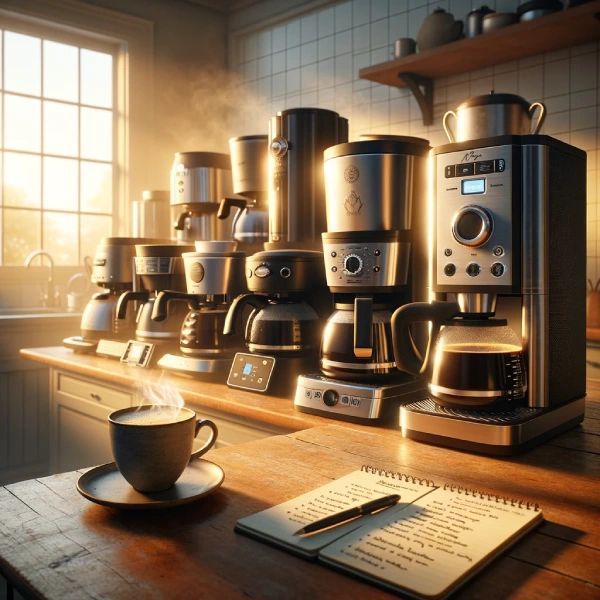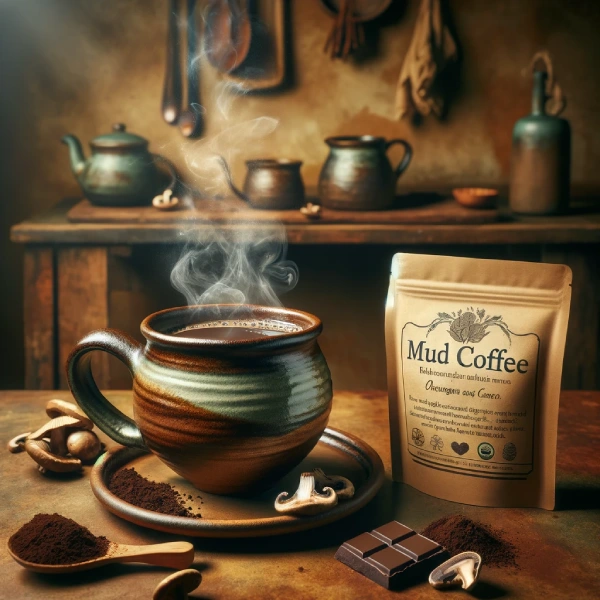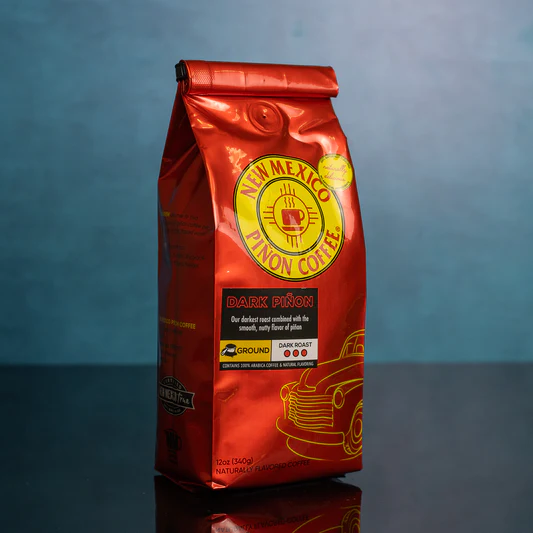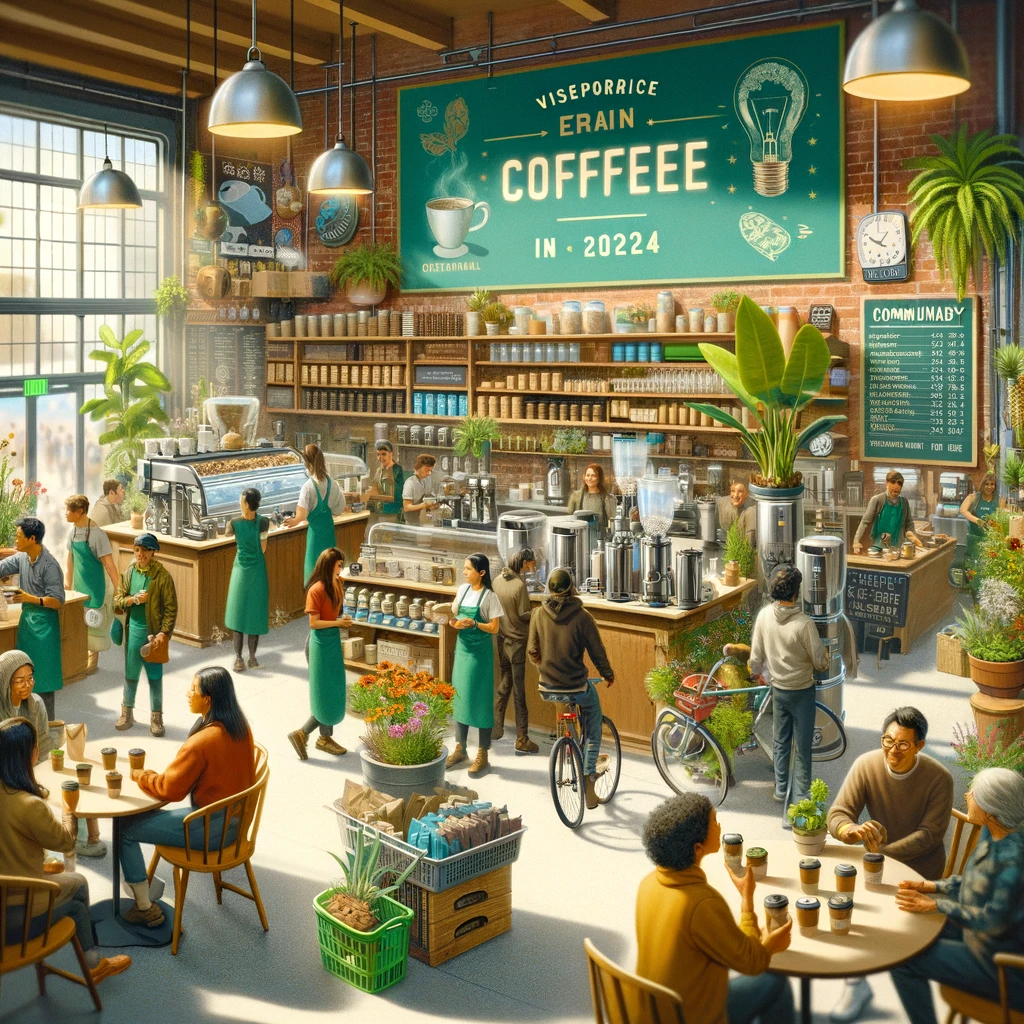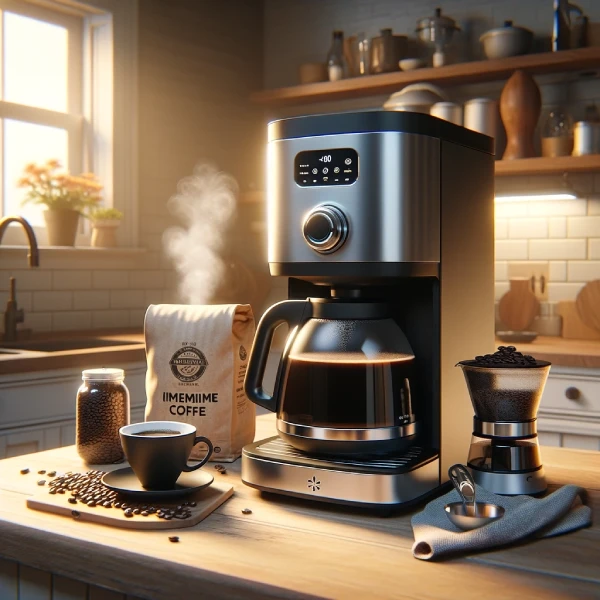The United States has long been a nation of coffee lovers, and recent years have seen a significant evolution in how Americans consume their favorite brew. From the rise of specialty coffee shops to the growing trend of home brewing, the coffee industry in the US is experiencing a dynamic shift. This article delves into the latest statistics and trends shaping the coffee market in the US for 2023-2024.
Coffee has always been more than just a beverage in the United States; it's a cultural phenomenon. Whether it's the first cup of the day to kickstart morning routines or a reason to meet friends and colleagues, coffee holds a special place in American life.
As we move into 2023-2024, the coffee industry continues to grow and evolve, influenced by new consumer preferences, technological advancements, and innovative business models.
In this article, we explore the current state of the coffee market in the US, examining consumption patterns, industry growth, and emerging trends.
Coffee Consumption Patterns in the US
Total Coffee Consumption
- Annual Consumption: According to Statista, the total coffee consumption in the US has been steadily increasing over the past few years. In 2023, it is projected to reach approximately 26.5 million 60-kilogram bags. Statista
- Per Capita Consumption: The average American coffee drinker consumes about 3 cups of coffee per day, with a notable increase in consumption among younger demographics.
- Home vs. Out-of-Home Consumption: Home consumption of coffee has seen a significant rise, particularly post-2020, with 79% of American coffee drinkers preparing coffee at home.
Preferences and Trends
- Specialty Coffee: The specialty coffee segment continues to grow, with over 40% of Americans aged 18-24 preferring specialty coffee drinks.
- Sustainability and Ethical Sourcing: There is a growing trend towards ethically sourced and sustainably grown coffee, with 47% of consumers indicating a preference for environmentally friendly coffee brands.
- Cold Brew and Ready-to-Drink (RTD) Coffee: Cold brew coffee has seen a surge in popularity, with sales growing by 23% in 2023. RTD coffee products are also gaining traction, particularly among younger consumers.
The Coffee Shop Market in the US
Number of Coffee Shops
- Total Coffee Shops: The number of coffee shops in the US is expected to exceed 37,000 by the end of 2024, with a 3.8% annual growth rate.
- Independent vs. Chain Coffee Shops: Independent coffee shops account for approximately 52% of the market, while chains like Starbucks and Dunkin' dominate the remaining share.
Revenue and Growth
- Industry Revenue: The coffee shop industry in the US is projected to generate $47.5 billion in revenue by 2024.
- Growth Drivers: Key factors driving growth include the expansion of coffee shop chains, the rise of specialty coffee, and the increasing consumer demand for convenience and quality.

Photo by cottonbro studio from Pexels
Coffee Industry Innovations and Technology
E-commerce and Subscription Services
- Online Coffee Sales: Online sales of coffee and coffee-related products have grown by 27% in 2023, with more consumers opting for the convenience of online shopping.
- Subscription Models: Coffee subscription services are on the rise, offering consumers a way to explore different coffee varieties and blends regularly.
Technological Advancements
- Smart Coffee Machines: The adoption of smart coffee machines, both in coffee shops and for home use, is increasing, with features like remote brewing and personalized coffee recipes.
- Mobile Ordering and Delivery: Mobile ordering apps and coffee delivery services have become more prevalent, catering to the demand for convenience and speed.
Consumer Behavior and Preferences
Demographic Trends in Coffee Consumption
- Age Groups: Millennials (ages 25-40) are the largest consumer group of coffee in the US, with 70% reporting daily coffee consumption. Generation Z (ages 18-24) is quickly catching up, showing a growing interest in specialty and artisanal coffee options.
- Income and Spending: Higher-income households tend to spend more on premium coffee products. The average monthly spending on coffee for households earning over $100,000 is approximately $25, compared to $15 for lower-income households.
Impact of Health Trends
- Health-Conscious Choices: There's an increasing demand for healthier coffee options, such as organic, sugar-free, and plant-based milk alternatives. 35% of coffee drinkers in the US now prefer plant-based milk in their coffee.
- Functional Coffee: The market for functional coffee, infused with vitamins, minerals, and other supplements, is growing, with a projected annual growth rate of 6% through 2024.
Impact of the Pandemic on Coffee Consumption
Shifts in Consumption Patterns
- Home Brewing Surge: With the closure of many coffee shops during lockdowns, there was a significant shift towards home brewing. Sales of home coffee brewing equipment saw a 40% increase in 2023.
- Online Purchases: Online coffee sales spiked during the pandemic, with a 50% increase in 2020-2021, a trend that continues into 2023-2024.
Changes in Coffee Shop Operations
- Adoption of Contactless Services: Coffee shops rapidly adopted contactless ordering and payment systems, with 60% of coffee shops in the US now offering these services.
- Outdoor Seating and Social Distancing: To comply with social distancing guidelines, many coffee shops expanded outdoor seating, with 30% of coffee shops in urban areas investing in outdoor infrastructure.
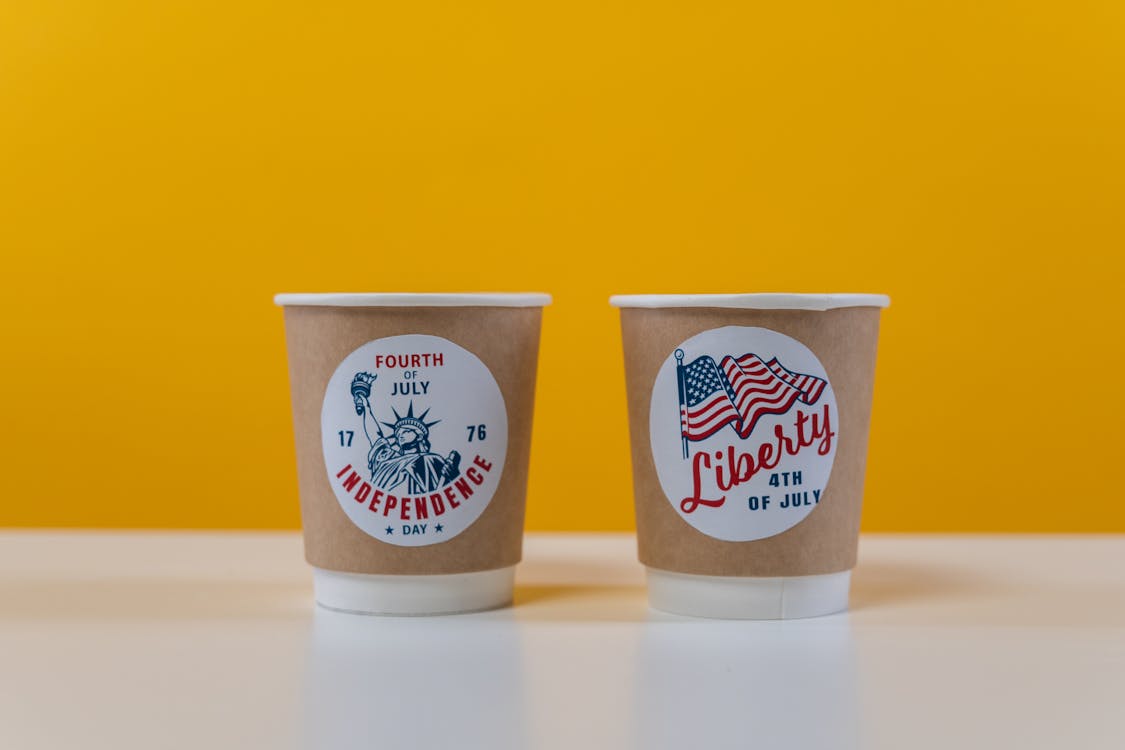
Photo by cottonbro studio from Pexels
The Business of Coffee: Trends and Innovations
Growth of Specialty Coffee Shops
- Market Share: Specialty coffee shops are gaining market share, currently representing 35% of all coffee shops in the US.
- Consumer Preferences: Consumers are increasingly seeking high-quality, ethically sourced coffee, with 55% willing to pay more for sustainably sourced coffee.
Expansion of Coffee Chains
- New Store Openings: Major coffee chains like Starbucks and Dunkin' are continuing to expand, with a combined total of 500 new store openings planned for 2023-2024.
- Diversification of Offerings: Coffee chains are diversifying their menus to include a wider range of food options, non-coffee beverages, and seasonal specials to attract a broader customer base.
Future Projections and Trends for 2023-2024
Market Growth and Projections
- Projected Growth: The US coffee market is expected to grow by 4.8% annually, reaching a market volume of $87.1 billion by 2024.
- Emerging Markets: The ready-to-drink coffee segment is projected to grow the fastest, with an expected annual growth rate of 7.3% between 2023 and 2024.
Technological Innovations
- AI and Machine Learning: Coffee shops and manufacturers are increasingly using AI and machine learning for personalized marketing, inventory management, and consumer behavior analysis.
- Sustainable Technologies: There is a growing focus on sustainable technologies in coffee production and packaging, with biodegradable packaging and energy-efficient roasting processes gaining traction.
Social and Environmental Impact
- Fair Trade and Direct Trade: There is an increasing shift towards fair trade and direct trade practices in the coffee industry, ensuring better prices and working conditions for coffee farmers.
- Carbon Footprint Reduction: Coffee companies are focusing on reducing their carbon footprint through sustainable farming practices, renewable energy usage, and waste reduction initiatives.
Evolving Landscape of Coffee Consumption
Rise of Home Coffee Bars
- Increasing Popularity: The trend of setting up home coffee bars has gained significant momentum, with 45% of coffee drinkers in the US investing in premium home coffee-making equipment.
- Sales of Coffee Equipment: Sales of espresso machines, grinders, and specialty coffee makers have seen a 50% increase, indicating a growing interest in replicating café-quality coffee at home.
Coffee as a Culinary Experience
- Coffee Pairings and Tastings: Coffee tastings and food pairings are becoming popular, similar to wine tastings, with 30% of specialty coffee shops now offering these experiences.
- Educational Workshops: Coffee shops and roasters are increasingly offering workshops and classes, focusing on brewing techniques and coffee knowledge, with a 25% increase in participation in 2023.
Role of Technology and Innovation
Coffee Apps and Digital Platforms
- Rise of Coffee Apps: Mobile apps for coffee ordering, loyalty programs, and delivery have seen a 60% increase in usage, enhancing customer convenience and engagement.
- Digital Coffee Communities: Online platforms and forums for coffee enthusiasts are growing, providing spaces for sharing knowledge, reviews, and coffee-related content.
Sustainable Innovations in Coffee Production
- Eco-Friendly Farming Practices: There's a growing adoption of eco-friendly farming practices, with 40% of US coffee brands now sourcing beans from sustainable farms.
- Innovations in Packaging: Biodegradable and compostable coffee packaging solutions are on the rise, with a 35% increase in their usage by coffee brands.
Future Outlook for 2023-2024
Anticipated Trends in Coffee Consumption
- Growth of Niche Coffee Markets: Niche markets like single-origin, micro-lot, and rare coffee varieties are expected to grow, with a projected 20% increase in sales.
- Expansion of Coffee Flavors and Infusions: Innovative coffee flavors and infusions, including CBD-infused and adaptogenic coffees, are anticipated to gain popularity.
The Role of AI and Robotics in Coffee Shops
- AI in Customer Service: AI-driven chatbots and virtual assistants for customer service in coffee shops are expected to become more prevalent.
- Robotics in Coffee Preparation: Robotics in coffee preparation and serving is anticipated to grow, with pilot projects showing a 30% efficiency increase.
Global Influences and Fusion Trends
- Influence of Global Coffee Cultures: The influence of global coffee cultures, such as Scandinavian and Japanese coffee traditions, is expected to grow in the US market.
- Fusion Coffee Products: Fusion coffee products that blend traditional coffee with international flavors are anticipated to see a 25% increase in popularity.
Conclusion
The US coffee market is a dynamic and ever-evolving industry, characterized by its adaptability and innovation. As we look towards 2023-2024, the industry is set to continue its trajectory of growth, driven by changing consumer preferences, technological advancements, and a strong focus on sustainability.
The rise of home coffee bars, the integration of technology in coffee experiences, and the influence of global coffee cultures are just a few of the trends shaping the future of coffee in the US.
With an increasing emphasis on quality, sustainability, and innovation, the coffee industry is well-positioned to meet the diverse needs and preferences of American consumers, ensuring that coffee remains an integral and cherished part of daily life.
FAQs
-
What are the latest trends in the US coffee market for 2023-2024? The US coffee market in 2023-2024 is seeing trends like the rise of home coffee bars, increased popularity of specialty and sustainably sourced coffees, and the integration of technology in coffee experiences.
-
How has the pandemic affected coffee consumption in the US? The pandemic led to a surge in home coffee brewing, with a significant increase in online coffee sales and the adoption of contactless services in coffee shops.
-
What is the projected growth of the US coffee market by 2024? The US coffee market is expected to grow by 4.8% annually, reaching a market volume of $87.1 billion by 2024.
-
Are consumers in the US interested in sustainable coffee options? Yes, there is a growing trend towards ethically sourced and sustainably grown coffee, with 47% of consumers indicating a preference for environmentally friendly coffee brands.
-
What technological advancements are shaping the coffee industry? Technological advancements such as AI and machine learning for personalized marketing, smart coffee machines, and mobile ordering apps are shaping the coffee industry.
-
How popular are specialty coffee shops in the US? Specialty coffee shops are gaining market share and currently represent 35% of all coffee shops in the US.
-
What are the preferences of Millennials and Gen Z regarding coffee? Millennials and Gen Z show a growing interest in specialty and artisanal coffee options, with a focus on quality and sustainability.
-
Is there an increase in home coffee brewing in the US? Yes, there has been a significant increase in home coffee brewing, with more consumers investing in premium coffee-making equipment.
-
What role does AI play in coffee shops? AI plays a role in enhancing customer service through chatbots and virtual assistants, and in improving efficiency in coffee preparation.
-
Are there any new coffee flavors or infusions gaining popularity? Innovative coffee flavors and infusions, including CBD-infused and adaptogenic coffees, are gaining popularity in the US market.



